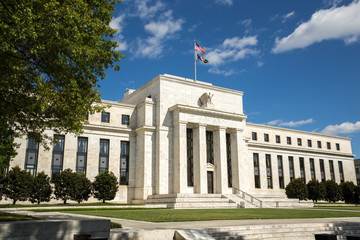 It’s a big data day on the global economic stage, and at least for this market pundit, it’s nice to have something to focus on besides the childish squabbling between the United States and China. Let’s start by taking a look at the numbers out of Australia which were released earlier today: consumer prices declined slightly last quarter, highlighting the challenge the Reserve Bank of Australia (RBA) faces in harnessing inflation and interest rates to normal levels. Annual consumer price index (CPI) inflation rose 1.7 percent, on par with expectations. The country’s headline CPI also matched analyst expectations, rising 0.5 percent in Q3 2019, but this was still a slowdown from the 0.6 percent gain seen in the prior quarter.
It’s a big data day on the global economic stage, and at least for this market pundit, it’s nice to have something to focus on besides the childish squabbling between the United States and China. Let’s start by taking a look at the numbers out of Australia which were released earlier today: consumer prices declined slightly last quarter, highlighting the challenge the Reserve Bank of Australia (RBA) faces in harnessing inflation and interest rates to normal levels. Annual consumer price index (CPI) inflation rose 1.7 percent, on par with expectations. The country’s headline CPI also matched analyst expectations, rising 0.5 percent in Q3 2019, but this was still a slowdown from the 0.6 percent gain seen in the prior quarter.
The RBA has been working tirelessly to improve the country’s low inflation rate and stagnant economic growth by cutting interest rates by 75 basis points since June. Interest rates are now at an all-time low of 0.75 percent.
Australia’s ASX 200 was down 0.83 percent as of 2:45 p.m. HK/SIN on Wednesday. Most other Asian benchmarks were also trading lower after all three Wall Street benchmarks closed lower on Tuesday. Hong Kong’s Hang Seng Index eased 0.49 percent by the mid-afternoon, and south Korea’s Kospi was down 0.58 percent. Japan’s Nikkei 225 was 0.57 percent lower. Both of China’s benchmark index were also in the red.
What’s Next?
Analysts are largely expecting another interest rate hike by the Federal Reserve when the central bank finishes its two-day policy meeting later today, with some analysts placing expectations of a cut up to 98 percent. If implemented, this would lower the benchmark lending rate to between 1.5 percent and 1.75 percent. According to Forbes analyst Sergei Klebnikov, Fed Chairman Jerome Powell has likened the current economic situation to one in the 1990s when Alan Greenspan guided the Fed to interest rate cuts in short bursts and successfully extended the period of economic expansion. Klebnikov has posited that today’s current economic situation is akin to that of nearly 30 years ago, and that the Fed’s next moves may be able to prevent the recession that some analysts fear.
The Bank of Japan will also be holding its monthly policy meeting today, which will end in a policy statement tomorrow. According to reports from the Financial Times, the BOJ is likely to keep policy stable, or to make “relatively minor” adjustments that shouldn’t have a significant easing effect.
Currency Movements
Traders should expect a lot of volatility in the currency markets today, but thus far there has been little movement. The dollar eased modestly against the yen, down 0.04 percent to 108.84 though a technical breakthrough the 109 level is likely. The pound firmed against the dollar, trading up 0.05 percent to $1.2872, while the euro gained 0.03 percent against the greenback to $1.1113.
